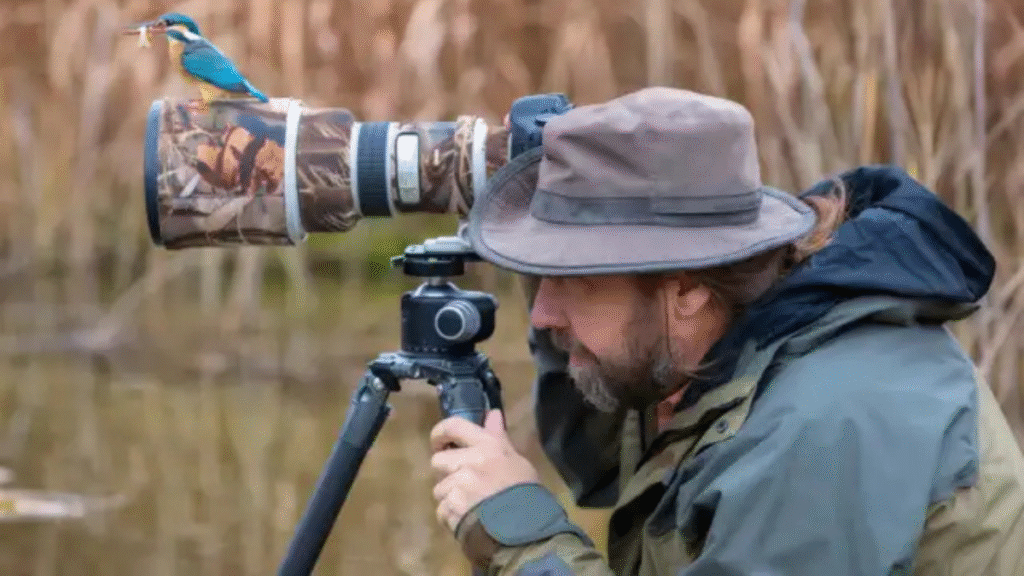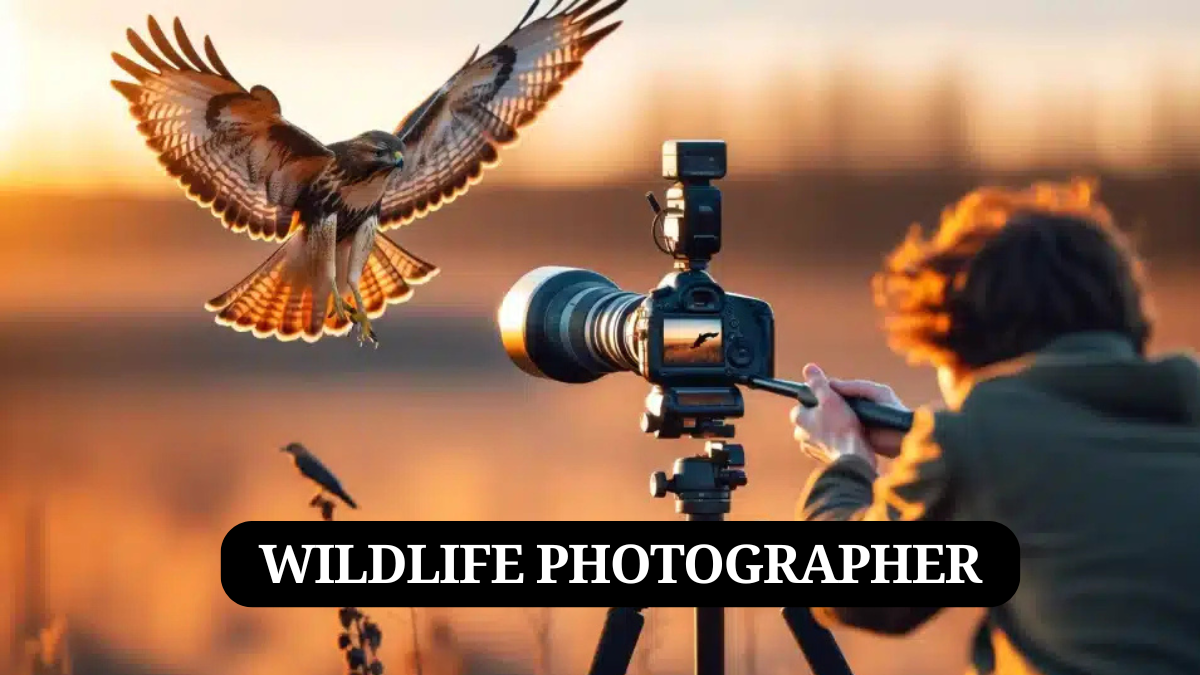Wildlife photography simply does not mean capturing images of animals; it is an art that requires a blend of patience, technical know-how, and appreciation for nature.
It can be an incredibly rewarding career, both creatively and financially, if one is really interested in wildlife and photography.
Therefore, this guide will shed light on how to become a wildlife photographer, from step-to-step detailing the skills required, the equipment to be used, and expectations regarding salary.
Step 1: Understand the Role of a Wildlife Photographer
A wildlife photographer takes photos of animals in the wild. The reason may vary from documentation for conservation purposes to editorial or commercial purposes. It demands:

- Long waits
- Going to distant places
- Knowledge of behaviour about animals
- Photography skills
Step 2: Build Basic Photography Skills
You need to learn the basics of photography before going to the wild. These are:
- Knowing exposure (ISO, shutter speed, aperture)
- Shooting a scene
- Mastering autofocus skills
- Operating manual settings properly
Take online classes, workshop sessions, or a diploma course in photography. Practice on everyday subjects before shifting to wildlife.
Step 3: Learn About Wildlife and Nature
Good wildlife photographers know their subjects. Study:
- Animal behaviour
- Ecosystems and conservation problems
- How to get near animals without startling them
Reading field guides, watching documentaries, or taking zoology courses can significantly enhance your fieldwork.
Step 4: Invest in the Right Equipment
Your equipment plays a critical part in wildlife photography. Key tools are:
- Camera: DSLR or mirrorless with fast burst mode shooting (Canon R5, Nikon Z8, Sony A7R series)
- Lenses: Telephoto lens (200–600mm) for far shots; wide-angle lens for environmental portraits
- Tripod/Monopod: For stability when shooting for hours
- Accessories: Weather covers, memory cards, batteries, camera bag
Though top-quality gear is preferred, most amateurs begin with average quality and change to better quality equipment later on.
Step 5: Practice in Local Environments
You don’t have to begin with lions in Africa. Work with what’s locally available:
- Drive to the nearby national parks, bird preserves, and woods.
- Shoot squirrels, birds, insects, or deer.
- Work with natural lighting, motion, and timing.
This confidence helps you adjust to dynamic, volatile environments.
Step 6: Build a Professional Portfolio
Your portfolio is your visual resume. A solid collection should have:
- A combination of close-ups and environmental portraits
- Action shots (flight, hunting, etc.)
- High-resolution, well-composed images
- Consistency in editing and style
Build an online portfolio using tools like Adobe Portfolio, Wix, or your own website. Include captions, stories, and context to engage the viewer.
Step 7: Find Your Niche
As you develop, establish your speciality. Some areas of focus include:
- Birds
- Big cats
- Marine wildlife
- Insects or macro wildlife
- Endangered species documentation
Focusing your attention helps you excel in a saturated market and get specific customers.
Step 8: Promote Yourself Professionally
To make your passion earn you money, marketing is essential:

- Utilize social media (Instagram, YouTube) to post work and behind-the-scenes material.
- Enter photo competitions (such as Wildlife Photographer of the Year).
- Print in magazines such as National Geographic, BBC Wildlife, or Outdoor Photographer.
- Sell on stock websites (Shutterstock, Getty Images, Alamy).
Ninjas may network with conservation organisations, tourism boards, and other photographers, too.
Step 9: Consider Certifications or Formal Education
While not required, credentials can enhance credibility:
- Wildlife photography diploma/certificate programmes
- Workshops run by experts or organizations (WWF, Nat Geo)
- Conservation photography initiatives
These sharpen your skills and might lead to mentorship or internships.
Salary Expectations for Wildlife Photographers
Salaries in wildlife photography range greatly based on experience, niche, and sources of income.
Starting Freelancers
- $20,000–$40,000/year (through photo sales, blogs, prints, and occasional assignments)
Seasoned Professionals
- $50,000–$100,000+/year
Through publications, workshops, brand endorsements, exhibitions, or full-time positions with NGOs or media organizations.
Sources of Revenue May Also Include:
- Stock photo licencing
- Sponsored social media posts
- Selling photo prints
- Wildlife tours and workshops
- Authoring books or eBooks
Note: It sometimes takes years to establish a viable income, and most photographers combine income from a variety of sources.
Challenges to Consider
Before you head out, have a good sense of the challenges in this arena:
- Irregular income as an independent contractor
- Physically strenuous conditions (weather, terrain, wildlife hazard)
- Patience and perseverance for recording infrequent events
- Environmental ethics—non-harm to animals or the environment
Read More :- History of Tasmania: From Ancient Aboriginal Origins to Modern Civilization
Individuals who make it through blend passion with business acumen and resiliency.
Conclusion:-
It is not an overnight process to become a wildlife photographer. It involves continuous learning, love for nature, creative vision, and respect for the wild.
If you are ready to work hard, it can be one of the most fulfilling professions enabling you to tell untold stories of the world’s most intriguing animals.
Whether you prefer to work for large publications or freelance from home, the trick is to begin small, develop your skills, and expand your reputation one picture at a time.
FAQs:-
What is wildlife photography?
Wildlife photography involves capturing images of animals in their natural habitats. It requires patience, skill, and often travel to remote locations.
What skills are important for wildlife photographers?
Key skills include camera handling, composition, patience, and knowledge of animal behavior. Editing and storytelling also help.
Where can I publish or sell my wildlife photos?
You can sell through stock photo websites, magazines, books, exhibitions, or personal blogs and social media.
